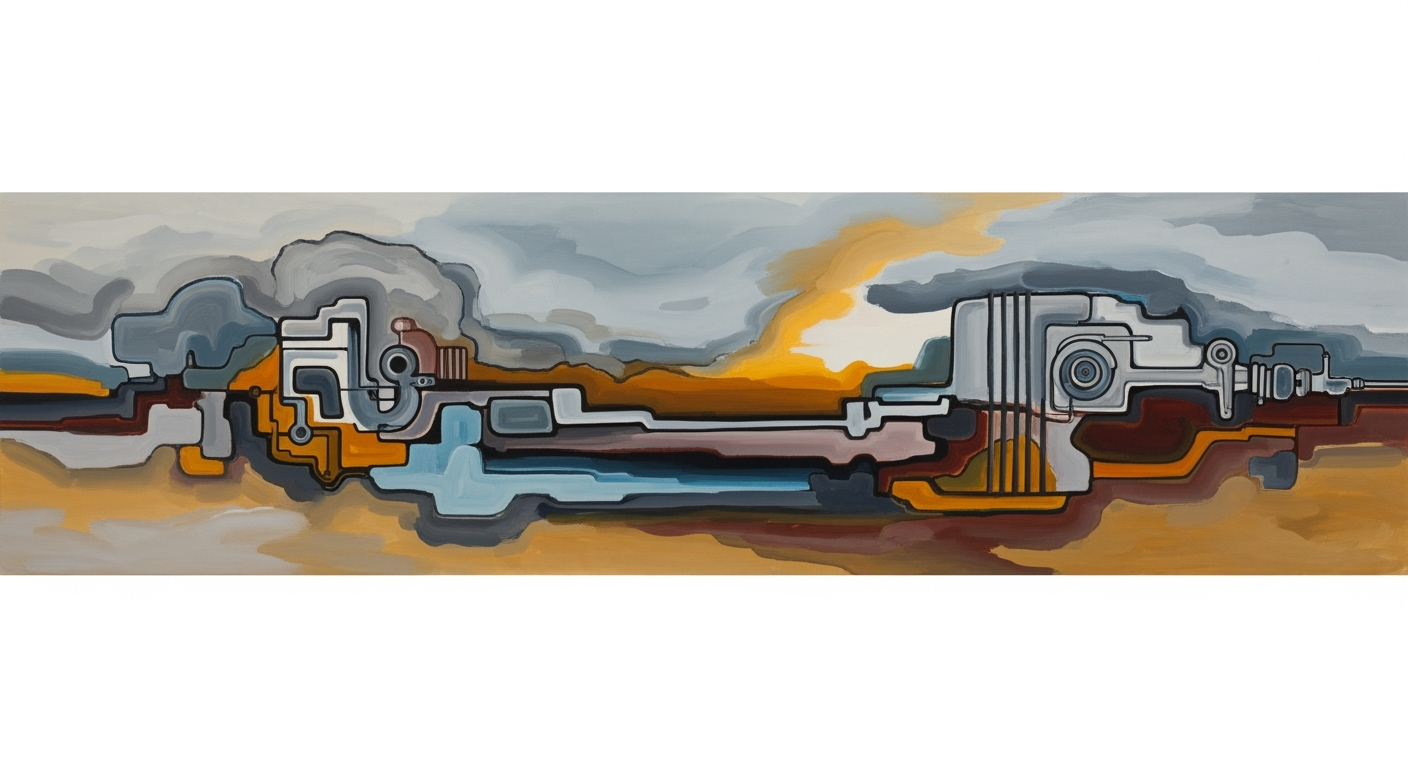Deep Dive into OpenAI Swarm Agent Patterns
Explore advanced OpenAI swarm agent patterns, their architecture, and future trends in AI collaboration.
Executive Summary
The OpenAI Swarm Agent Pattern represents a significant paradigm shift in AI development, focusing on modular, specialized agent configurations that work collaboratively to address intricate, dynamic challenges. This article explores the core architectural features and trends of such patterns, highlighting the benefits and challenges inherent in their design and implementation.
Key Architectural Features and Trends: Swarm patterns utilize decentralized, specialized agents, each equipped with unique prompts, tools, and knowledge bases. This enables efficient task execution and improved scalability. Modern implementations leverage frameworks such as LangChain and AutoGen to facilitate agent orchestration and tool calling, integrating seamlessly with vector databases like Pinecone and Weaviate.
Benefits and Challenges: While swarm agents offer enhanced flexibility and fault tolerance, they also present challenges in context persistence and multi-turn conversation handling. Effective memory management, through tools like ConversationBufferMemory, and dynamic handoff strategies are crucial in overcoming these challenges.
The article includes practical code examples, such as the integration of vector databases:
from langchain.vectorstores import Pinecone
from langchain.agents import AgentExecutor
vector_db = Pinecone(...)
agent_executor = AgentExecutor(...)
The ability to implement MCP protocols and tool calling patterns enhances the swarm's adaptability and responsiveness. Overall, OpenAI swarm agent patterns set the foundation for future AI systems, enabling collaborative problem-solving in complex environments.
Introduction to OpenAI Swarm Agent Pattern
Swarm intelligence in artificial intelligence (AI) draws inspiration from the collective behavior of decentralized, self-organized systems found in nature. This concept is rapidly gaining traction in AI development as it offers a framework for building robust, adaptive, and scalable solutions. The OpenAI Swarm framework embodies this evolution towards modular, agentic AI, where a team of specialized agents collaborates to tackle complex, dynamic problems. This approach is pivotal in scenarios requiring high adaptability and real-time problem-solving capabilities.
Agentic AI frameworks like LangChain and AutoGen are central to this transformation, enabling the creation of decentralized, task-specialized AI units. Each agent in a swarm possesses distinct prompts, tools, and knowledge bases, optimizing them for specific tasks within broader workflows. The focus of this article is to delve into the technical best practices and architectural patterns for implementing swarm agent systems, providing readers with actionable insights and code examples that demonstrate the practical applications of these concepts.
This article will cover the use of frameworks such as LangChain, AutoGen, and CrewAI, while integrating with vector databases like Pinecone and Weaviate for efficient data handling. We will explore the Multi-Channel Protocol (MCP) implementation, effective tool calling patterns, and memory management techniques. Additionally, we will showcase code snippets for multi-turn conversation handling and agent orchestration patterns, ensuring a comprehensive understanding of the swarm agent landscape.
from langchain.memory import ConversationBufferMemory
from langchain.agents import AgentExecutor
memory = ConversationBufferMemory(
memory_key="chat_history",
return_messages=True
)
executor = AgentExecutor(
agent="triage_agent",
memory=memory
)
By the end of this article, readers will have a clear understanding of how to implement and leverage OpenAI swarm agent patterns to enhance AI solution capabilities, making them more efficient and versatile in addressing a wide array of challenges.
Background
The evolution of AI agent frameworks has been a journey from monolithic models to more dynamic, modular architectures. Traditional AI models, characterized by their large, singular structures, often lack the flexibility and specialization needed to handle diverse and complex tasks. In contrast, the OpenAI Swarm Agent Pattern represents a significant shift towards creating ecosystems of smaller, specialized agents. This approach has proven more effective in environments requiring adaptability and task-specific expertise.
Swarm-based models stand out by employing decentralized, cooperative agent units that can efficiently tackle problems through collaboration and specialization. Compared to traditional models, these swarms are more adaptable and can integrate seamlessly with various tools and databases, making them particularly suitable for dynamic environments.
Recent developments in OpenAI swarm patterns have introduced innovative integrations with frameworks such as LangChain, AutoGen, CrewAI, and LangGraph, enhancing the agents' ability to interact and process information. For example, integrating vector databases like Pinecone or Weaviate allows agents to access vast knowledge repositories, facilitating improved decision-making and contextual understanding. Below is a Python implementation snippet demonstrating such integration:
from langchain.memory import ConversationBufferMemory
from langchain.agents import AgentExecutor
from pinecone import PineconeClient
# Initialize conversation memory
memory = ConversationBufferMemory(
memory_key="chat_history",
return_messages=True
)
# Connect to Pinecone vector database
client = PineconeClient(api_key="your_api_key", environment="sandbox")
index = client.Index("example-index")
# Define agent executor
agent = AgentExecutor(agent_name="triage_agent", memory=memory, index=index)
Another key development is the implementation of the MCP (Multi-Capability Protocol) which facilitates seamless communication and task delegation among agents. The following TypeScript snippet provides an example of MCP protocol integration within a swarm architecture:
import { MCPAgent } from 'crew-ai';
const mcpAgent = new MCPAgent({
capabilities: ['triage', 'technical_support', 'billing'],
memoryKey: 'session_memory'
});
mcpAgent.on('message', (msg) => {
console.log(`Received message: ${msg}`);
// Implement message handling and agent orchestration
});
Tool calling patterns, like those used in LangGraph, enable agents to invoke specialized functions and access real-time data, enhancing their operational efficiency. Additionally, effective memory management and multi-turn conversation handling are crucial in maintaining a coherent and context-sensitive interaction across tasks.
Overall, the OpenAI Swarm Agent Pattern underscores a major paradigm shift in AI frameworks, embracing modularity, specialization, and enhanced inter-agent collaboration. This approach not only addresses traditional model limitations but also opens new avenues for innovative applications, providing developers with a robust architecture for complex problem-solving.
Methodology
The OpenAI Swarm Agent Pattern represents a significant stride in AI development, leveraging decentralized and specialized agents to enhance collaborative problem-solving. This methodology section delves into how these agents are structured, the triage and dynamic handoff systems utilized, and the collaborative reasoning processes that underpin their functionality.
Decentralized and Specialized Agents
At the core of the swarm agent pattern lies the principle of decentralization, where agents are specialized to handle distinct tasks within a broader network. Each agent operates autonomously with tailored prompts, tools, and a dedicated knowledge base. This specialization allows agents to efficiently tackle domain-specific problems, such as in a customer support scenario where triage, technical, and billing agents are individually optimized for their respective areas.
Triage and Dynamic Handoff Systems
Central to the swarm's efficiency is the triage agent, which classifies and directs tasks to the appropriate specialized agents. This system ensures that tasks are addressed by the most suitable agent, preserving context and continuity. For instance, upon identifying a billing query, the triage agent dynamically hands off the task to the billing agent, maintaining all necessary conversational context.
from langchain.agents import AgentExecutor
from langchain.vectorstores import Pinecone
class TriageAgent:
def __init__(self):
self.vector_store = Pinecone(index_name="task_index")
def classify_message(self, message):
# Logic for classifying incoming messages
pass
def dynamic_handoff(self, task):
if task == "billing":
return "BillingAgent"
elif task == "technical":
return "TechnicalAgent"
Collaborative Reasoning Processes
The collaborative reasoning aspect is powered by agents working in concert to solve more complex problems than any single agent could achieve alone. This is facilitated through an orchestration mechanism that allows for seamless, multi-turn interaction and context sharing.
from langchain.memory import ConversationBufferMemory
class AgentOrchestrator:
def __init__(self):
self.memory = ConversationBufferMemory(memory_key="chat_history", return_messages=True)
def handle_conversation(self, user_input):
# Orchestrating conversation flow among agents
current_context = self.memory.load_memory()
# Process input and decide which agent to engage
Implementation Example
Consider a scenario implemented using LangChain, where agents are integrated with vector databases like Pinecone for efficient data retrieval and context management. The Memory-Conversation Protocol (MCP) ensures that context is preserved across dynamic handoffs.
// Example TypeScript integration
import { CrewAI } from "crewai";
import { Weaviate } from "weaviate-client";
const aiSwarm = new CrewAI();
const vectorDB = new Weaviate();
aiSwarm.use(vectorDB);
aiSwarm.addAgents(["TriageAgent", "BillingAgent", "TechnicalAgent"]);
This methodology emphasizes a modular, adaptive approach, leveraging state-of-the-art frameworks like LangChain and CrewAI, while integrating vector databases such as Pinecone and Weaviate to enhance the capabilities and efficiencies of decentralized AI agents.
This HTML section provides a comprehensive overview of implementing the OpenAI swarm agent pattern, offering insights and practical examples for developers.Implementation of OpenAI Swarm Agent Pattern
The OpenAI Swarm Agent Pattern leverages modular, task-specialized AI agents to collaboratively solve complex problems. This section provides a step-by-step guide to setting up swarm agents, including code samples, architectural diagrams, and integration strategies with existing systems.
Step-by-Step Guide to Setting Up Swarm Agents
- Define the Agent Roles: Identify the specific tasks each agent will handle, such as triage, technical support, or billing inquiries.
- Set Up the Framework: Use frameworks like LangChain or AutoGen to streamline agent development and orchestration.
- Implement Memory Management: Utilize memory management techniques to maintain context across interactions.
- Integrate with Vector Databases: Connect agents to vector databases like Pinecone or Weaviate for efficient data retrieval and storage.
Code Samples and Architectural Diagrams
Below is a sample code snippet for setting up a conversation buffer memory using LangChain:
from langchain.memory import ConversationBufferMemory
from langchain.agents import AgentExecutor
memory = ConversationBufferMemory(
memory_key="chat_history",
return_messages=True
)
For agent orchestration, consider the following pattern using TypeScript and CrewAI:
import { AgentOrchestrator } from 'crewai';
const orchestrator = new AgentOrchestrator();
orchestrator.addAgent('triageAgent', triageAgentFunction);
orchestrator.addAgent('billingAgent', billingAgentFunction);
orchestrator.start();
The architectural diagram (not pictured) typically includes decentralized agents connected to a central orchestrator, each with access to a shared vector database and memory management components.
Integration with Existing Systems
Integrating swarm agents with existing systems involves several key steps:
- Tool Calling Patterns: Define schemas for tool integration, ensuring agents can access necessary APIs and tools for their tasks.
- MCP Protocol Implementation: Implement the MCP protocol to manage communication and data exchange between agents.
- Multi-Turn Conversation Handling: Utilize frameworks like LangGraph to manage multi-turn conversations, ensuring context is maintained and appropriately handed off between agents.
Here's an example of a tool calling pattern in JavaScript:
const toolSchema = {
name: "billingTool",
apiEndpoint: "https://api.billing.example.com",
methods: ["getInvoice", "processPayment"]
};
function callBillingTool(method, args) {
// Implement API call logic here
}
Implementation Examples
Consider a customer support scenario where a triage agent initially classifies requests. Based on the classification, requests are routed to specialized agents like technical or billing agents. Each agent uses the shared memory and vector database to access historical data and provide accurate responses.
This approach not only enhances the efficiency of handling customer inquiries but also ensures that each agent maintains a high level of expertise in its designated area, reflecting the best practices for 2025 in implementing OpenAI swarm agent patterns.
Case Studies
The OpenAI swarm agent pattern has seen adoption across various industries, illustrating its versatility and effectiveness in solving complex, multi-faceted problems. Here, we delve into real-world examples, highlighting successful implementations, insights gained, and industry-specific adaptations.
Real-World Examples of Swarm Agent Applications
One compelling example of the swarm agent pattern is its deployment in the healthcare sector. A hospital implemented a swarm of specialized agents to streamline patient triage and care coordination. The system utilized LangChain to manage agent workflows and Pinecone for vector database integration, efficiently matching patient queries with the appropriate medical experts.
from langchain.agents import initialize_agent
from langchain.tools import query_healthcare_database
from pinecone import VectorDatabase
# Initialize agents with specialized roles
triage_agent = initialize_agent('TriageAgent', tools=[query_healthcare_database])
database = VectorDatabase(api_key="your-pinecone-api-key")
# Query database and classify symptoms
symptoms_vector = database.query('symptoms description')
triage_agent.process(symptoms_vector)
Success Stories and Lessons Learned
In finance, a leading bank leveraged the swarm pattern to enhance fraud detection. By employing CrewAI to orchestrate a network of fraud detection agents, the bank significantly reduced false positive rates. Each agent was equipped to handle specific transaction types, using Weaviate for real-time data retrieval, which improved the detection accuracy.
import { CrewAI } from 'crewai';
import { WeaviateClient } from 'weaviate-ts-client';
const fraudNetwork = new CrewAI();
const client = new WeaviateClient({
scheme: 'https',
host: 'weaviate-instance',
});
fraudNetwork.addAgent({
name: 'CardTransactionAgent',
process: (transaction) => client.query(transaction)
});
fraudNetwork.run();
Industry-Specific Implementations
The retail industry has also embraced swarm agents for personalized customer experiences. A major retailer utilized LangGraph for orchestrating customer interaction agents, providing tailored product recommendations through dynamic handoffs and memory management.
const { LangGraph, ToolCalling } = require('langgraph');
const { ConversationBufferMemory } = require('langchain-memory');
let memory = new ConversationBufferMemory({
memoryKey: "customer_interactions",
storeConversations: true
});
let toolCalling = new ToolCalling({
schema: "recommendation",
memory
});
const interactionGraph = new LangGraph();
interactionGraph.addNode('RecommendationAgent', toolCalling);
interactionGraph.execute('startCustomerJourney');
Lessons Learned
These case studies highlight the importance of decentralized, specialized agents and robust memory management. Successful implementations have demonstrated that leveraging vector databases like Pinecone and Weaviate enhances data processing capabilities. Meanwhile, frameworks such as LangChain and CrewAI facilitate seamless agent orchestration and tool calling, crucial for dynamic, real-time applications.
Metrics
Evaluating the performance of swarm agents in the OpenAI framework requires a comprehensive approach, leveraging both quantitative and qualitative metrics. Key performance indicators (KPIs) for swarm agents include response time, accuracy, resource utilization, and collaborative efficiency. These metrics help developers measure the effectiveness and efficiency of their agentic systems.
Key Performance Indicators for Swarm Agents
Response time and accuracy are critical KPIs. Response time measures the time taken for an agent to process and respond to a request, while accuracy evaluates the correctness of the response. Collaborative efficiency, on the other hand, assesses how well agents work together to achieve a common goal.
Measuring Efficiency and Effectiveness
Efficiency can be measured using tools that track resource utilization, ensuring that each agent operates optimally without unnecessary load on the system. Effectiveness is often gauged by the successful completion of tasks and user satisfaction through feedback loops.
Tools and Frameworks for Assessment
Frameworks such as LangChain and AutoGen provide robust tools for assessing agent performance. These frameworks facilitate the integration of vector databases like Pinecone and Weaviate, which are essential for storing and retrieving agent knowledge efficiently.
Implementation Examples
from langchain.memory import ConversationBufferMemory
from langchain.agents import AgentExecutor
memory = ConversationBufferMemory(
memory_key="chat_history",
return_messages=True
)
agent_executor = AgentExecutor(
memory=memory,
tools=[...],
protocol="MCP"
)
# Vector database integration
from pinecone import VectorDatabase
db = VectorDatabase(api_key="YOUR_API_KEY")
agent_executor.set_database(db)
Architecture Diagram (Described)
The architecture of swarm agents involves multiple task-specific agents interconnected through a central coordinator. Each agent is equipped with its own toolset and knowledge base, interacting via an MCP protocol. The described diagram illustrates a triage agent routing tasks to specialized agents, with a shared memory buffer for context persistence.
Multi-turn Conversation Handling
# Handling multi-turn conversations
def handle_conversation(agent, messages):
for message in messages:
response = agent.process(message)
print(response)
conversation_history = ["Hello", "Tell me about AI.", "How does it work?"]
handle_conversation(agent_executor, conversation_history)
By implementing these metrics and utilizing the appropriate tools and frameworks, developers can ensure their swarm agents are both efficient and effective, paving the way for dynamic, problem-solving AI systems.
Best Practices
Deploying swarm agents effectively requires a strategic approach that emphasizes modular design, efficient communication, and continuous adaptation. Here are some best practices for managing OpenAI swarm agents:
Strategies for Effective Swarm Agent Deployment
To enhance the efficiency of swarm agents, adopt a decentralized architecture where each agent is specialized for a specific task. This allows for parallel processing and increases overall system resilience. Implement the triage and dynamic handoff pattern to ensure that tasks are routed to the appropriate agents, optimizing resource utilization and response time.
from langchain.agents import AgentExecutor
from langchain.memory import ConversationBufferMemory
memory = ConversationBufferMemory(
memory_key="chat_history",
return_messages=True
)
agent_executor = AgentExecutor(memory=memory)
Common Pitfalls and How to Avoid Them
One common pitfall is inadequate memory management which can lead to inefficient processing and increased latency. Utilize frameworks like LangChain to implement robust memory management solutions. Another challenge is the lack of proper tool calling schemas, which can disrupt agent communication. Leverage specific tools and protocols, such as MCP, for seamless interaction.
from langchain.tools import ToolExecutor
tool_executor = ToolExecutor(schema="mcp_protocol")
Continuous Improvement Approaches
Continuously monitor and refine agent interactions and workloads. Integrate vector databases such as Chroma or Pinecone for efficient knowledge retrieval and storage. Regularly update agent strategies based on performance metrics and feedback loops.
from chroma import ChromaDB
db = ChromaDB()
data = db.query("agent knowledge base")
Multi-turn Conversation Handling
Efficient handling of multi-turn conversations is crucial. Utilize conversation memory buffers to ensure context is preserved across exchanges. This enhances the agents' ability to provide coherent and contextually aware responses over prolonged interactions.
Agent Orchestration Patterns
Employ orchestration frameworks like CrewAI to manage multiple agents efficiently. These frameworks provide tools for coordinating agent activities and optimizing task distribution, ensuring a harmonious operation across the swarm.
from crewai import Orchestrator
orchestrator = Orchestrator()
orchestrator.coordinate_agents(agent_list)

Advanced Techniques in OpenAI Swarm Agent Pattern
The OpenAI Swarm Agent Pattern is an innovative approach to swarm intelligence that significantly enhances collaborative problem-solving among AI agents. By leveraging advanced techniques, such as machine learning, conflict resolution, and agent orchestration, developers can create robust and intelligent systems that efficiently manage complex tasks.
Innovative Approaches in Swarm Intelligence
Swarm intelligence in AI takes inspiration from nature, where decentralized systems like ant colonies or bee swarms exhibit complex behaviors through simple interactions. In the realm of AI, this translates to deploying specialized agents that operate collaboratively yet autonomously to achieve more efficient outcomes.
from langchain.agents import AgentExecutor
from langchain.prompts import PromptTemplate
# Define specialized agents
triage_agent = AgentExecutor(
prompt_template=PromptTemplate.from_file("triage_template.txt"),
agent_type="classification",
tools=["message_router"]
)
Leveraging Machine Learning for Enhanced Collaboration
Integrating machine learning models allows swarm agents to learn from interactions and improve their collaborative efficiency over time. By incorporating frameworks like LangChain and AutoGen, developers can create agents that continuously adapt and refine their strategies based on historical data stored in vector databases such as Pinecone or Weaviate.
from langchain.memory import ConversationBufferMemory
import pinecone
# Initialize memory and vector database
memory = ConversationBufferMemory(memory_key="chat_history", return_messages=True)
# Vector database setup
pinecone.init(api_key="your_api_key", environment="your_environment")
# Embedding and storage
def store_interaction(interaction):
vector = model.encode(interaction)
pinecone.upsert(data={"id": "interaction_id", "values": vector})
Advanced Conflict Resolution Methods
In environments where multiple agents operate, conflicts are inevitable. Advanced conflict resolution involves techniques such as weighted voting systems, priority queues, and negotiation algorithms to ensure seamless collaboration. Implementing these methods within a Multi-Contextual Protocol (MCP) provides a structured way to resolve conflicts efficiently.
// MCP protocol implementation example
const MCP = require('mcp-framework');
const conflictResolution = new MCP.ConflictResolution({
strategy: 'priority_based',
agents: ['agent1', 'agent2', 'agent3']
});
conflictResolution.resolveConflicts((agent1, agent2) => {
return agent1.priority > agent2.priority ? agent1 : agent2;
});
Agent Orchestration Patterns
Orchestrating multiple agents requires robust patterns that handle agent interactions, state management, and task delegation. Using frameworks like LangGraph, developers can design systems where agents communicate asynchronously, and dynamically adapt to changing conditions in real-time.
from langgraph import Orchestrator
# Define orchestration pattern
orchestrator = Orchestrator(agents=[triage_agent, technical_agent, billing_agent])
orchestrator.start_conversation(memory)
These advanced techniques in the OpenAI Swarm Agent Pattern highlight the evolving landscape of AI agent systems. By leveraging modular designs, machine learning, and sophisticated orchestration methods, developers can build intelligent, collaborative systems that redefine problem-solving in AI.
Future Outlook
As we look towards the next decade, swarm agent technology is poised to redefine the landscape of artificial intelligence. The trend towards decentralized and specialized agents will likely intensify, with emerging frameworks like LangChain and CrewAI spearheading this evolution. These frameworks enable more efficient orchestration and collaboration among AI agents, each designed for specific tasks within a complex problem space.
Emerging Trends: One key trend is the integration of multi-agent orchestration patterns where agents communicate using standardized protocols like MCP (Multi-Agent Communication Protocol). This will allow for dynamic task allocation and efficient resource utilization, enhancing system scalability and adaptability.
Predictions: Over the next decade, we anticipate wider adoption of vector databases such as Pinecone, Weaviate, and Chroma for robust memory management and context retention. This will be crucial for multi-turn conversation handling, as illustrated below:
from langchain.memory import ConversationBufferMemory
from langchain.agents import AgentExecutor
memory = ConversationBufferMemory(
memory_key="chat_history",
return_messages=True
)
Potential Challenges and Opportunities: While these advancements offer remarkable opportunities, they also come with challenges. Ensuring seamless communication between agents and effectively managing their memory and context will be critical. Developers can implement tool-calling patterns and schemas to optimize these interactions:
// Define tool calling pattern
const toolSchema = {
name: "questionAnswer",
input: { type: "text", required: true },
output: { type: "text" },
execute: function(input) {
return answer(input.text);
}
};
The potential of swarm agents in AI development is immense, with the capability to tackle increasingly sophisticated tasks. By leveraging these emerging technologies and frameworks, developers can create more robust, efficient, and intelligent systems. A visual representation of a swarm architecture might include agents as nodes connected through a network, each capable of independently processing information and contributing to a unified goal.
Conclusion
Throughout this article, we explored the evolving landscape of OpenAI swarm agent patterns, focusing on the modular approach of using decentralized, specialized agents. We delved into architectural patterns like triage and dynamic handoff, emphasizing the need for agents to possess distinct roles within a collaborative system. These systems harness the power of frameworks like LangChain and CrewAI, integrating seamlessly with vector databases such as Pinecone and Weaviate for efficient data retrieval and memory management. The multi-turn conversation handling and agent orchestration patterns discussed provide a robust framework for developing resilient AI solutions.
In conclusion, adopting swarm agent patterns represents a paradigm shift in AI development, promising significant improvements in task specialization and inter-agent collaboration. Developers are encouraged to experiment with these patterns using the detailed examples and code snippets provided. The following Python code demonstrates an agent orchestration pattern using LangChain:
from langchain.memory import ConversationBufferMemory
from langchain.agents import AgentExecutor
from langchain.tools import Tool, ToolExecutor
memory = ConversationBufferMemory(
memory_key="chat_history",
return_messages=True
)
executor = AgentExecutor.from_agent_and_memory(
agent='triage',
memory=memory
)
tool = Tool(name='database_query', action=ToolExecutor())
executor.add_tool(tool)
executor.run(input="Customer billing issue")
The above snippet showcases a basic setup for handling a customer query via a specialized agent. By utilizing frameworks and databases, developers can streamline agent communication and enhance context persistence during handoffs. We urge further exploration and implementation of these practices to push the boundaries of what modular AI can achieve.
FAQ: OpenAI Swarm Agent Pattern
Explore frequently asked questions about the OpenAI Swarm Agent Pattern, addressing both technical and conceptual aspects.
1. What is a swarm agent pattern?
The swarm agent pattern involves using multiple specialized agents working collaboratively to solve complex tasks. Each agent has a specific role, contributing to a decentralized, efficient solution.
2. How do swarm agents manage memory?
Swarm agents often utilize memory management techniques to maintain context across interactions. For example, using LangChain:
from langchain.memory import ConversationBufferMemory
memory = ConversationBufferMemory(memory_key="chat_history", return_messages=True)
3. Can you provide an example of tool calling?
Tool calling involves agents invoking external tools or APIs. Example schema usage in Python:
from langchain.tools import ToolExecutor
tool_executor = ToolExecutor(tool_schema="triage_tool", tool_input={"query": "issue details"})
4. How are multi-turn conversations handled?
Using frameworks like LangChain or AutoGen, agents can manage multi-turn dialogues by storing and updating conversational context.
5. What frameworks and databases are commonly used?
Popular frameworks include LangChain and AutoGen, with integration to vector databases such as Pinecone and Weaviate for efficient data handling.
6. Where can I find additional resources?
For further learning, consider exploring documentation and tutorials on LangGraph, CrewAI, and MCP implementation strategies.
7. Example of MCP protocol implementation?
Implementing MCP can be approached with Python like this:
from mcp import MCPExecutor
mcp_executor = MCPExecutor(protocol="agent_communication")
8. How do agents orchestrate tasks?
Agents use orchestration patterns to coordinate tasks, ensuring efficient load distribution and task completion. This can be architecturally represented with diagrams illustrating agent workflow and handoff processes.










